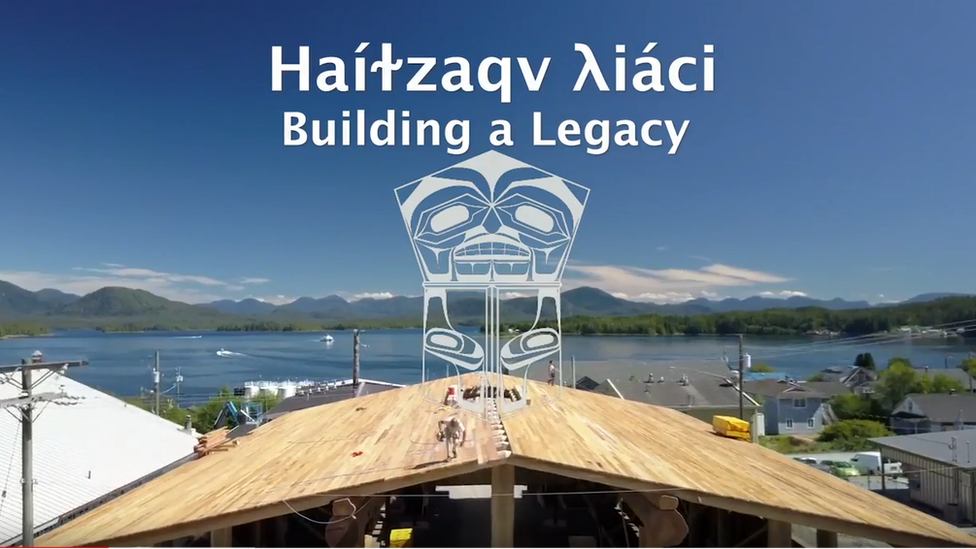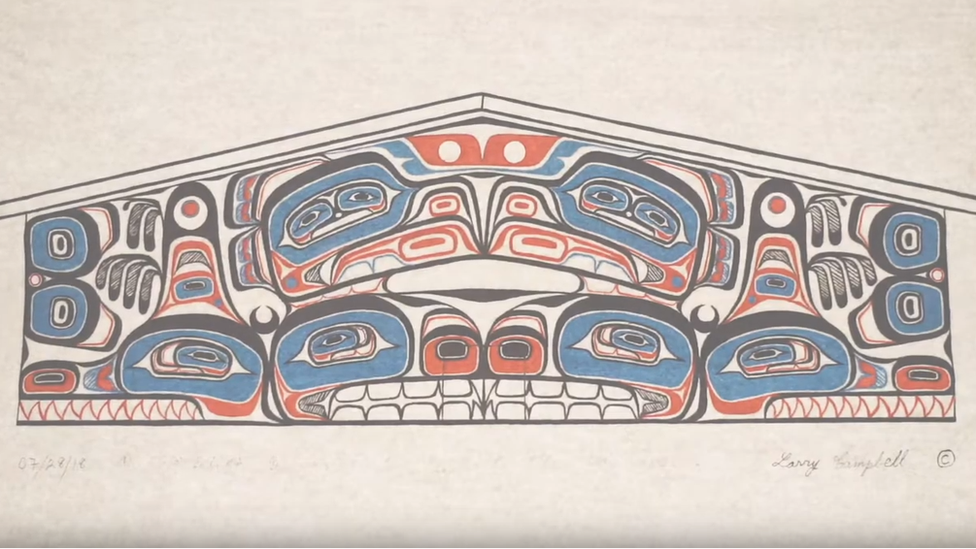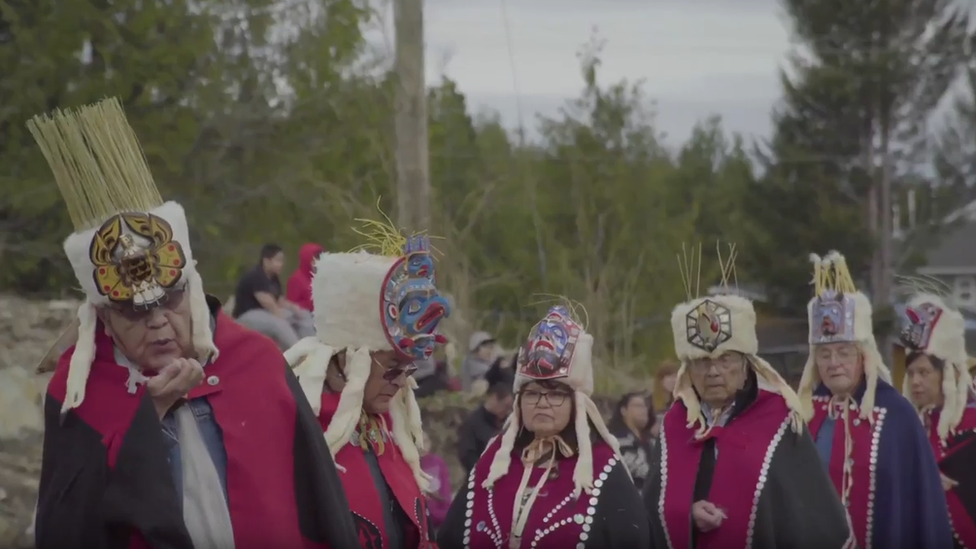Canada indigenous people build new 'Big House'
- Published

Building the Big House has been a communal effort
The Heiltsuk people of western Canada have opened a striking new ceremonial longhouse, after decades of planning and fundraising.
The last Big House, where the Heiltsuk gathered for sacred communal events, was destroyed in controversial circumstances 120 years ago, and the First Nation has had to use a community centre for all its ceremonies in the meantime, the CBC public broadcaster reports.
The Gvakva'aus Hailzaqv (House of the Heiltsuk) in Bella Bella, the main town of the Heiltsuk Nation's territory on the coast and islands of British Columbia, is made entirely of locally sourced and milled red and yellow cedar, external, including logs more than a metre wide and weighing eight tonnes, the Heiltsuk Nation Council said.
It took 18 months to build, and its opening is being marked with five days of celebrations, external, with up to 2,000 guests expected to attend - including a Maori delegation from New Zealand.
'Like a dream'
Community leaders are proud of their achievement, as local artists have been working for 10 years to design, carve and paint four house posts that tell the origin story of their people in the formline art style characteristic of the peoples of the Pacific North-West.
"It feels great, it feels surreal, it feels sometimes like a dream," Chief Councillor Marilyn Slett of the Heiltsuk Nation Council, external told CBC.
William Housty, the cultural adviser on the project, said it is not a simply a practical matter of having somewhere to perform ceremonies, but also an important step towards overcoming more than a century of cultural assimilation.

The artwork is based on traditional formline designs
The Heiltsuk believe Christian missionaries deliberately knocked down the last Big House as part of a campaign to root out First Nation traditions.
"Missionaries claimed that the Big House was blown down in a storm. But none of our people ever believed that, because they chose that area to live in because it was so well sheltered from the storms," Mr Housty said.
Many customs central to indigenous culture, including the central potlatch gift-giving feast, were banned until as late as 1951, CBC recalls.
You may also be interested in:
As there is no-one alive who remembers what the previous Big House looked like, the builders relied on detailed oral accounts of its construction, plus written descriptions by fur traders and missionaries.
But the new building is not a straight copy of its predecessor. For one thing, it can accommodate three times as many people - 800 sitting, or 1,000 standing - and has to meet modern building regulations.
The project cost the equivalent of 5.2 million US dollars, of which the federal and provincial governments provided a substantial share.
But "there were donations at just about every potlatch and feast over the decades since the project was first imagined," Chief Councillor Slett told told Canadian Press news agency.
The Big House is a "symbol of our strength and our resilience as people. I know it's just going to make us stronger, external," she said.
"I just have so much gratitude for that".

Heiltsuk elders consecrate the site with eagle down feathers
Reporting by Martin Morgan
Next story: Uzbek wedding restrictions prompt backlash
Use #NewsfromElsewhere to stay up-to-date with our reports via Twitter, external.